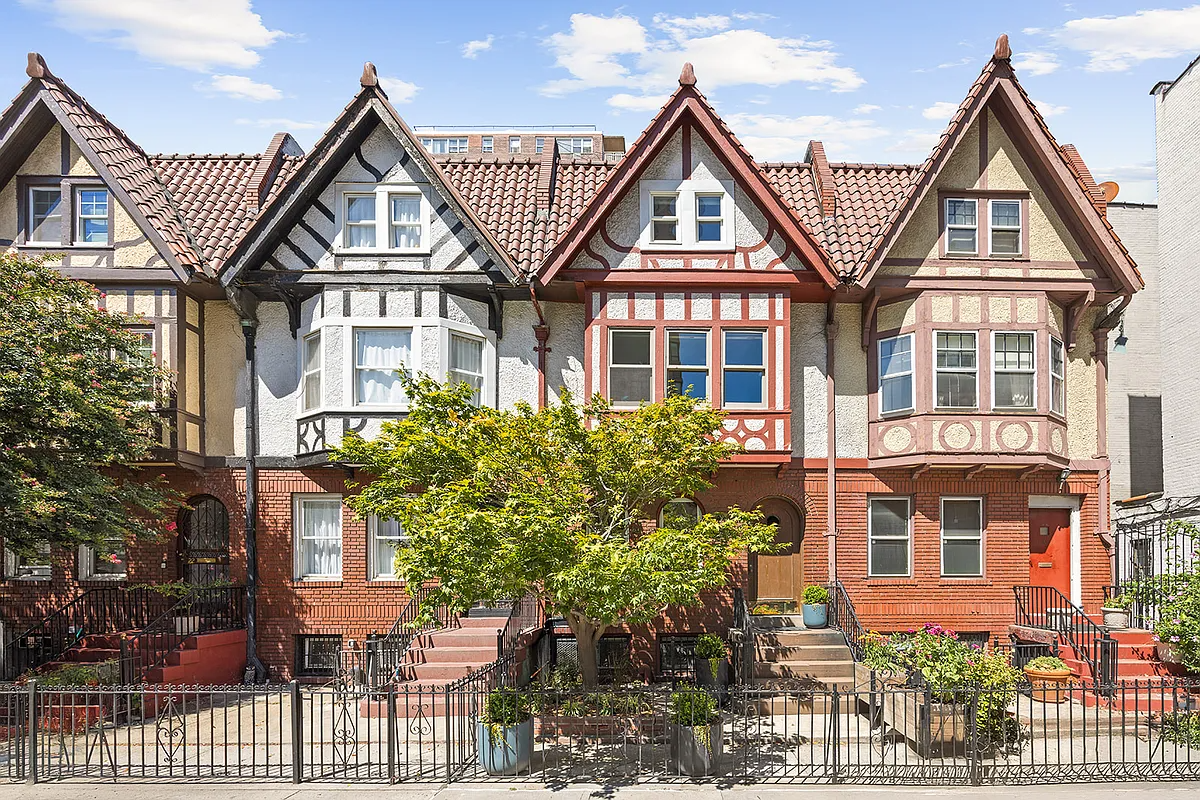Walkabout: Machinations at the Mechanics Bank, Part 4
Photo: New inmates getting fitted with stripes at Sing Sing. Correctionhistory.org. At the end of his trial for grand larceny, in 1913, former bank president, David A. Sullivan, was found guilty in less than thirty minutes. The man who once president of two banks, Union Bank of Brooklyn, and Mechanics and Traders Bank of Manhattan,…


Photo: New inmates getting fitted with stripes at Sing Sing. Correctionhistory.org.
At the end of his trial for grand larceny, in 1913, former bank president, David A. Sullivan, was found guilty in less than thirty minutes. The man who once president of two banks, Union Bank of Brooklyn, and Mechanics and Traders Bank of Manhattan, would now become just another inmate at the notorious Sing Sing Prison, “up the river” in Ossining, New York. Indicted for five counts of grand larceny and forgery, he was convicted of stealing a $20,000 bank loan note made out to Mechanics Bank, and using it to cover his own personal debts to another bank. Sullivan was forever to be known as “Bank Wrecker Sullivan”, due to the fact that his flagrant use of the banks’ funds to cover bad loans, and line his own pockets, had caused both the Union and Mechanics and Traders banks to fail.
With Sullivan safely behind bars for years, hopefully, the task remained to get some of the banks’ money back. The collapse of Union had left 23,000 depositors owed $4 million. Sullivan had borrowed $100,000 from another Manhattan bank, plus he had been cooking the books for years, setting up dummy companies to hide his actions, and paying himself and a select few others large bonuses for making loans that they knew would never be paid back. This was a very smart and very bad man.
How smart? He had put all of his assets in his wife’s name, and since she was not accused or convicted of anything, those assets were hers. That included his house in Flatbush, car, and many bank accounts. In 1914, Brooklyn District Attorney James C. Cropsey was assigned the task of tracking down and getting back some of Union Bank’s money. His investigation centered on Mrs. Sullivan. Instead of hiding from proper society in shame, Mrs. Sullivan had been quite busy. And she had help.
Miss Louise D. Burkhardt had been David Sullivan’s personal secretary. Although she had been questioned in the original investigation, she was not charged with anything, and neither was Sullivan’s wife. It soon became clear to D.A. Cropsey, that the ladies knew a lot more than anyone thought, and were aiding and abetting Sullivan. Mrs. Sullivan was in charge of her husband’s account at the Empire Trust Company, in Manhattan. There he had deposited over $224,000. While Sullivan was in Sing Sing, $1,600 was withdrawn, according to the records, by Sullivan himself. Actually, it had been withdrawn by Miss Burkhardt, who had power of attorney.
Sullivan also had another account, at the same bank, which in 1908, received deposits totaling $22,000. This was during the time that Union Bank went belly-up. If you remember from the first episode of this story, Sullivan was indicted twice. The first time, in 1908, nothing happened, and the evidence, a set of altered books, “disappeared”. At that very same time, Mrs. Sullivan deposited $15,000 in an account under her name at the Flatbush Trust Company. By the time the second set of indictments came down in 1912, this account had $123,000 in it.
Cropsey also found out that the Joralemon Securities Company, the dummy company that Sullivan established to further move his money around, had several mortgages in its possession. Those mortgages were transferred to Mrs. Sullivan, as well. What did Mrs. Sullivan have to say about all this? She was unavailable, out of the state, and unreachable to be served by a subpoena. In the wind.
Poor David Sullivan. Anna Sullivan might have been living it up somewhere out of the reach of the Brooklyn District Attorney, but he was behind bars in one of the most secure, strict and infamous prisons in America. They literally dug through mountains, and broke rocks in the yard with sledgehammers. Sing Sing was no joke. Prisoners were classified by the number of stripes on their prison garb, the more stripes, the worse your crime and your sentence. Executions were frequent, and Sing Sing’s death house held “Old Sparky”, the electric chair. Not the place one would expect a pampered ex-banker to thrive in. Prison should have broken David A. Sullivan. But in the fall of 1914, a series of fantastic stories were coming out of Sing Sing. David Sullivan was living it up in the Graybar Hotel!
In his investigations to get back some of the Union Bank depositor’s money, District Attorney Cropsey had sent his assistant, Louis Goldstein, up to Ossining to get some answers from Sullivan. There Goldstein was met with official obfuscation, and no access to the bank wrecker. Subpoenas were issued to John Malloy, the auditor of Sing Sing, and Vincent Stowe, one of the doorkeepers. The fantastic details emerged upon a couple of days in the Raymond Street Jail for Malloy, for contempt of court, and the threat of same for Stowe. David A. Sullivan was having the time of his life. For the last six months, with the warden’s permission, Sullivan had been conduction business and wheeling and dealing from his cell. He had his secretary, Miss Burkhardt, get an apartment in Ossining, and she came to the prison for instructions. She made deposits and other financial transactions for him, transcribed letters and basically, put in a full day at the office.
When he needed to get some air, Sullivan didn’t go out to the yard for some back-breaking rock work, like other convicts, but, accompanied by Malloy, and dressed in a suit, took rides in an automobile, going around Ossining, and also heading down to Brooklyn, on occasion, to conduct business. The scandal was outrageous! The story broke in the New York Times on October 27, 1914. The next day, Sing Sing Prison Warden J. T. McCormick was out of a job.
He insisted that Sullivan had NEVER taken auto rides around Westchester, and certainly never to Brooklyn. Yet Ass’t D.A. Goldstein had proof that the car had indeed been to Brooklyn, with the warden sitting next to him. Sullivan had dressed as the chauffeur and with either the warden or the prison auditor next to him, had visited Miss Burkhardt at her home, and had also made trips around Westchester and even to New York City. Incredibly, on one trip to visit the secretary, warden McCormick had left Sullivan alone so long that Sullivan went up to a Yonkers policeman and asked him to help him find the warden so they could go home. Balls of steel!
Everybody was about to get investigated, and a major shake-up occurred at Sing Sing. Subpoenas were issued to everyone, including the policeman and his partner in Yonkers, prison officials, and Miss Burkhardt, and others. As the investigation proceeded, several other people who had no connection to the warden or Sullivan testified that they saw Sullivan in Brooklyn, in Yonkers, and in Manhattan. It also came out that Warden McCormick had also left Sullivan totally unsupervised in Manhattan for four hours. No one knew where he went, or what he did. He was sentenced to hard labor, but, as the Times noted, his hard labor “consisted solely of booking and driving the automobile.” His chauffeur duties also included driving around warden’s wife and daughters, also without a guard. Why Sullivan, the D.A. asked? McCormick said that he wanted “a gentleman” to be his chauffeur, not just any old convict. Where did the car come from? Well that, too, was murky. The money came from a friend of a friend, (thought to be Sullivan himself) who lent him the cash, because it would take too long to wait for the state to pay for a car. And what a car, a brand new Cadillac, with all the bells and whistles, purchased by McCormick through Sullivan’s recommendations.
As can be expected, the press ate this up, covering the proceedings with long articles every day. Meanwhile, the D.A. was trying to find out how Mrs. Sullivan and Miss Burkhardt had been warned that they were going to be subpoenaed, and managed to avoid the process servers. Mrs. Sullivan especially had proved quite elusive. Miss Burkhardt finally gave herself up, in Hoboken, and it was learned that she and Mrs. Sullivan had been living there together in a hotel; right up until Miss Burkhardt had turned herself in. They went to find her at the hotel, but she was gone.
On February 18, 1915, David Sullivan was paroled, after serving two years in Sing Sing. His last year and a half had not been pleasant, after the new warden was installed, and he was sick. The bank wrecker, as he was called in the papers, was arrested the minute he cleared the prison gate, and taken to Brooklyn to answer to new charges against him. His son, David Junior, was with him, and the officer and the three men had dinner before taking the train to Grand Central, and then the subway back to Brooklyn and the Raymond Street Jail. Sullivan told reporters that he had diabetes, and had spent the last months of his sentence in the prison infirmary. He was coughing and appeared so weak that he had to be helped by both his son and the detective. He also told the reporters that he was grateful to the parole board for releasing him, and would be cooperating with the authorities. He didn’t expect to be able to make bail.
Sullivan was indicted on three new charges of larceny. His bail was set for $10,000, which was put up by three sisters of Monsignor John Woods of the Church of the Holy Cross, in Flatbush, Sullivan’s old church. It is at this point that he, his wife, and the money, disappear from the papers, and into history, leaving a lot of questions. Was he too sick to stand trial, what happened to him, and when did he die? What happened to his wife, Anna? Did she get the money? How about their son? What happened to Miss. Burkhardt? I have much more research to do and I hope to have a follow-up one of these days.
Walkabout: Machinations at the Mechanics Bank, part 1
Walkabout: Machinations at the Mechanics Bank, part 2
Walkabout: Machinations at the Mechanics Bank, part 3





What's Your Take? Leave a Comment